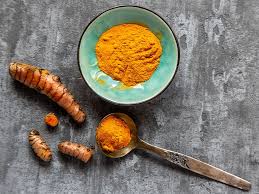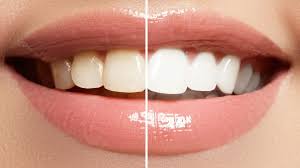Natural Remedies with Cloves and Bay Leaves for a Brighter Smile

Tumeric is a root vegetable, bright orange to mustard in color. It is usually dehydrated, made into a fine powder, and stored for prolonged periods. Turmeric is an ancient herb and has been used in food for its medicinal properties and its woody taste to enhance the flavors of curry.
The active compound in turmeric is curcumin, known for its antioxidant, antibacterial, and healing properties. While turmeric has many uses when ingested and even when applied topically to the skin, there has been little evidence to show that turmeric has any whitening effects on teeth.
Although, studies have shown that topical application of turmeric due to its beneficial properties can heal gums, protect against plaque, and promote oral health by eliminating bacteria and lowering infections, don’t get big hopes with turmeric as a teeth whitener.

Conocunt Oil Pulling
This ancient method of cleaning teeth is said to have originated in India. It involves taking a tablespoon of oil and squishing it around in the mouth for up to 20 minutes. The oil can be coconut, sesame, or any edible oil.
This method is effective in reducing harmful bacteria, dissolving plaque, and improving oral hygiene. Since this practice removes plaque, which usually yellows the surface of teeth, it can give your teeth a whiter appearance with consistent use if you suffer from plaque buildup. It, however, does not seem very promising against stains from coffee or smoking.

Strawberry
If you’ve been subjected to the online teeth-whitening frenzy, you probably are left wondering, are strawberries a natural teeth-whitening aid? Well, here’s the truth.
Strawberries are packed with an enzyme called malic acid, which has bleaching properties that, if applied to the teeth, will give a whitening appearance.
It is generally advised to mash a strawberry, mix it with some baking soda, apply it to the teeth, leave it for two minutes, and rinse after. This leaves the teeth whiter and brighter, but here’s the catch.
Malic acid, being a mild acid, if left on teeth for longer periods can corrode the enamel, which is an essential barrier to protect teeth. Therefore, this method is safe only if used in moderation. If you want lasting whitening results, look into a safer option that does not damage the enamel.
Strawberries also contain vitamin C, magnesium, and calcium, which are essential for teeth and gum health. So while it is not recommended to whiten your teeth with strawberries as a routine, you can always munch on them to promote your overall health.
2. Natural Teeth Whitening Powders

Charcoal
This is another ancient teeth cleaning mechanism and has gained traction on the internet in the past few months. Charcoal is made by slowly burning wood, coconut husks, or similar organic material and later ground into a fine powder.
It is a mild abrasive and helps scrub away dental plaque, leading to a whiter appearance (if staining was caused by plaque) and a cleaner feel.
There is little evidence to show that charcoal helps in whitening beyond the surface; therefore, it can’t be used to get a whitening effect for deeper stains.
Consistent use of charcoal to clean teeth can hurt teeth’s health as it may corrode away the enamel, which is an essential barrier for the teeth.

Baking soda
This method involves making a thick paste by mixing baking soda and water, sometimes with lemon juice, and applying it to the teeth. While the American Dental Association generally considers baking soda safe on teeth, it is not an effective teeth-whitening agent. Just as all other at-home natural teeth whiteners mentioned above works well only for mild plaque and staining and can have an abrasive effect on the enamel.

Homemade Whitening Powders
A typical mixture of at-home teeth whitening powder will combine any of these ingredients: baking soda, charcoal, turmeric, sea salt, calcium carbonate powder, or bentonite clay mixed with an essential oil such as peppermint.
Other antibacterial and anti-inflammatory ingredients, such as clove, may also be added. While these ingredients are all beneficial for removing bacteria, cleaning teeth, and scrubbing away plaque, they are not ideal whitening solutions for stains that go beyond the enamel.
As mentioned earlier, anything that scrubs the enamel will also corrode it, leading to exposed teeth, leading to more discoloration, weakened structure, and a higher risk of other oral health problems such as cavities and decay.
